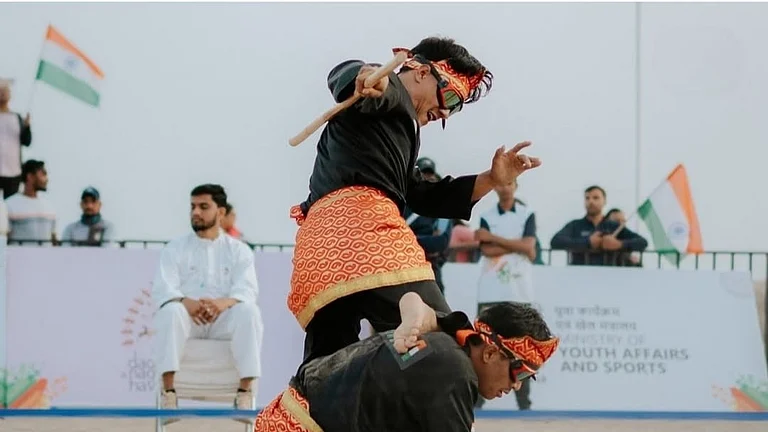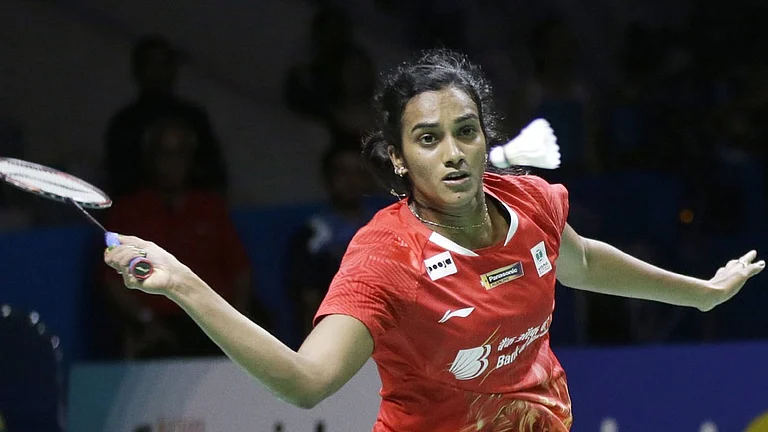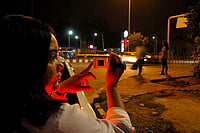Nesting Grounds
- India has lost 99.9% of its vultures; less than 60,000 remain
- Many died after consuming the cattle drug, diclofenac, depriving us of efficient waste managers
- They are now bred in captivity, to protect them from the drug and to increase their numbers
- This has taken off in Pinjore, with eggs hatched in artificial incubators, as well as naturally
***
You get off the highway, follow a long-winding dirt track and enter a thick forest, only to find it ending abruptly in a five-acre enclosure of sea-green concrete. It’s here, at the foothills of the misty Shivalik range, that a quiet, suspenseful drama has been unfolding for several months now. Under the watchful eyes of Dr Vibhu Prakash and his wife Nikita, the first artificially incubated vulture egg in India hatched here in January this year. The 200-gram egg, number A07, cracked open to reveal a healthy white-backed vulture chick noisily stomping out of its shell into a new world, delighting not just the two scientists—who spent sleepless nights watching it—but conservationists across the country who took hope from this stirring of new life in Pinjore.
With the hatching of A07 (now followed by the births of three more artificially incubated ones and five naturally born chicks) at this first-of-its-kind vulture breeding centre in India, hopes have been raised of arresting the steep decline in the bird’s numbers. With vultures almost dying out since the ’90s after consuming the chemical diclofenac (now banned)—commonly used in painkillers for cattle and deadly for vultures feeding on their carcasses—breeding them in captivity is now their one big hope of survival. Indeed, Prakash, principal scientist of the Pinjore programme, set up by the Bombay Natural History Society (BNHS), calls it a “desperate measure” to keep vultures safe from the drug, while attempting to increase their numbers. (Diclofenac will hopefully be completely phased out in the next five years.) Conservationist and film-maker Mike Pandey concurs: “With 99.9 per cent of our vultures gone, scientific intervention in breeding centres is the only hope of restoring the population. This needs to be done in every state.”

Vulture egg en route to incubator
The centre uses a method called “double clutching”. A vulture lays only one egg at a time but if that egg is removed from its nest within 10-15 days of laying, the confused mother will lay another egg. The first one is put into an artificial incubator and monitored round the clock till it hatches. It’s a long, painstaking procedure involving constantly controlling the temperature in the incubation unit, and rolling the egg around from time to time—but delicately, and only halfway—just as the mother or father bird would do. It’s vital, Nikita tells us, to prevent the egg not just from cracking but also getting infected. “In fact,” she says, “it’s as tricky as bringing up a baby.” Artificial incubation is commonly used on poultry farms, but the stakes there are much lower since there is no scarcity of eggs. “Here,” says Nikita, “we just can’t afford to lose an egg.” To compound matters, vultures are also slow breeders—a pair can take years to give birth to a healthy baby.
So, while the vulture may well be a forgotten link in the foodchain elsewhere in India, it is the king in Pinjore. No effort has been spared to make the centre’s 127 residents, captured from Gujarat, Maharashtra, Delhi, Assam and Madhya Pradesh, feel at home. They are fed on goat meat twice a week, live in large, roomy aviaries and even though electricity supply is erratic in the nearby villages, there’s round-the-clock power back-up here to keep incubators running without a glitch. What’s more, CCTV cameras are fitted in each aviary to study the big bird’s behaviour. As Prakash puts it, “Breeding vultures needs a great amount of dedication. We’re here for a purpose and that is to increase their numbers.”
The irony is that the very humans who fiercely guard these carrion eaters, and nurture them like their own children, must be seen as little as possible by the birds—strictly only when the aviaries are cleaned twice a year. The faintest sign of attachment can prove dangerous for both birds and carers after the vultures are released into the wild. They might, Prakash explains, become overly dependent for food, and not learn to fend for themselves; may even attack their care-givers.
But perhaps a peek wouldn’t hurt? We make our way through the slush to a nursery aviary where through the crack in the bamboo panelling we spot a nestling perched high on a concrete slab. Sensing our presence after a few minutes, it flaps its wings furiously and flies out of sight into a safe corner. “Their common strategy to ward off predators is to start vomiting and releasing strong-smelling bile that will force anybody to retreat,” says Prakash. Hastily, we back off.
It’s safer, and quite fascinating, to watch their movements on CCTV. The aviaries are open to the sky, albeit with a mesh to protect them from visiting leopards. The drizzling, humid afternoon seems to have caused a lull; the birds are not moving about much, as they tend to do, we are told, on other occasions. The hatched chicks, now fledglings, are just about learning to make short flights; or are nestling cosily in artificially created perches in the nursery aviary, each clearly possessive about its favourite spot.
With such pampering, Prakash’s dream of breeding 100 pairs of vultures at the Pinjore centre in the next decade might just turn into a reality. This campus, which is home to three species of endangered vultures (there are nine in India)—the white-backed, long-billed and slender- billed—was built from scratch nine years ago, with land from the Haryana government and funding from several environmental agencies in the UK such as the Royal Society for Protection of Birds and the Darwin Initiative for Survival of Species. Two more centres were set up later, in Raja Bhat Khawa, West Bengal and Rani, Assam, where breeding is under way (but no artificially incubated chicks have been born yet). The scale of the operation is far larger at Pinjore, which has 20 aviaries, plus two hospital aviaries, a fully equipped pathology laboratory, a surgery room and an incubator unit. It might seem like a lot of fuss to make over a few birds, but it is an investment well worth the cause. The loss of our vultures is, as Chris Bowden of the Royal Society for the Protection of Birds, UK, puts it, “one of the fastest and most catastrophic wildlife declines ever known, and one with very real detrimental impact on our environment”.

























